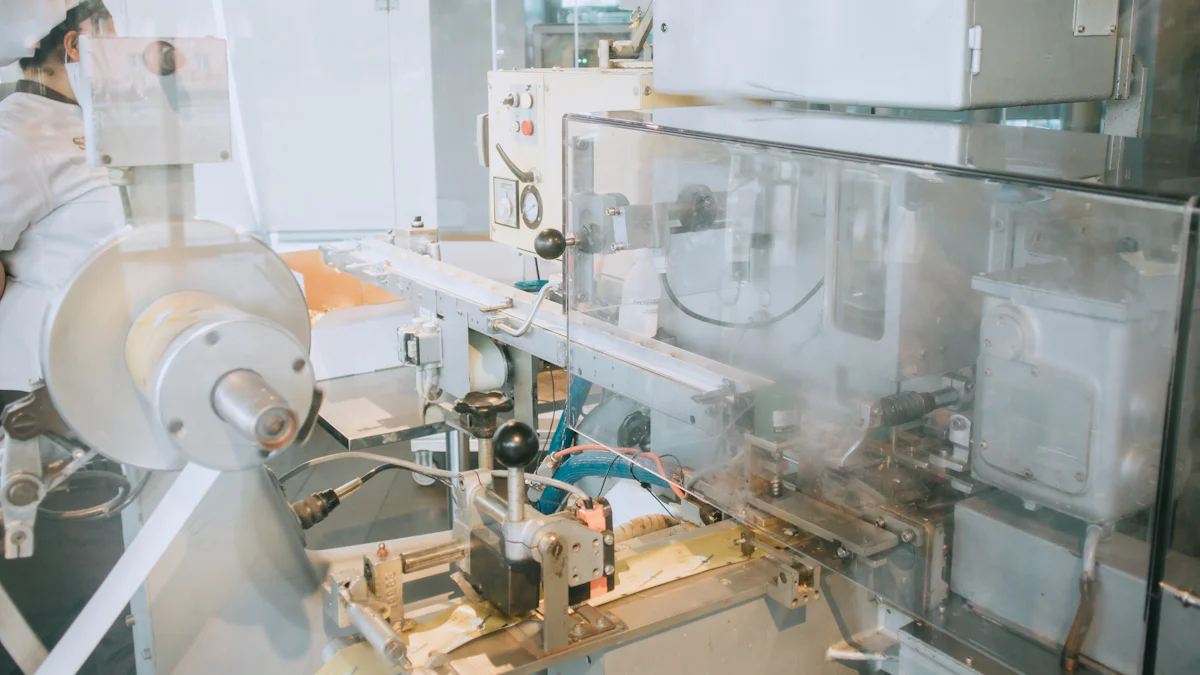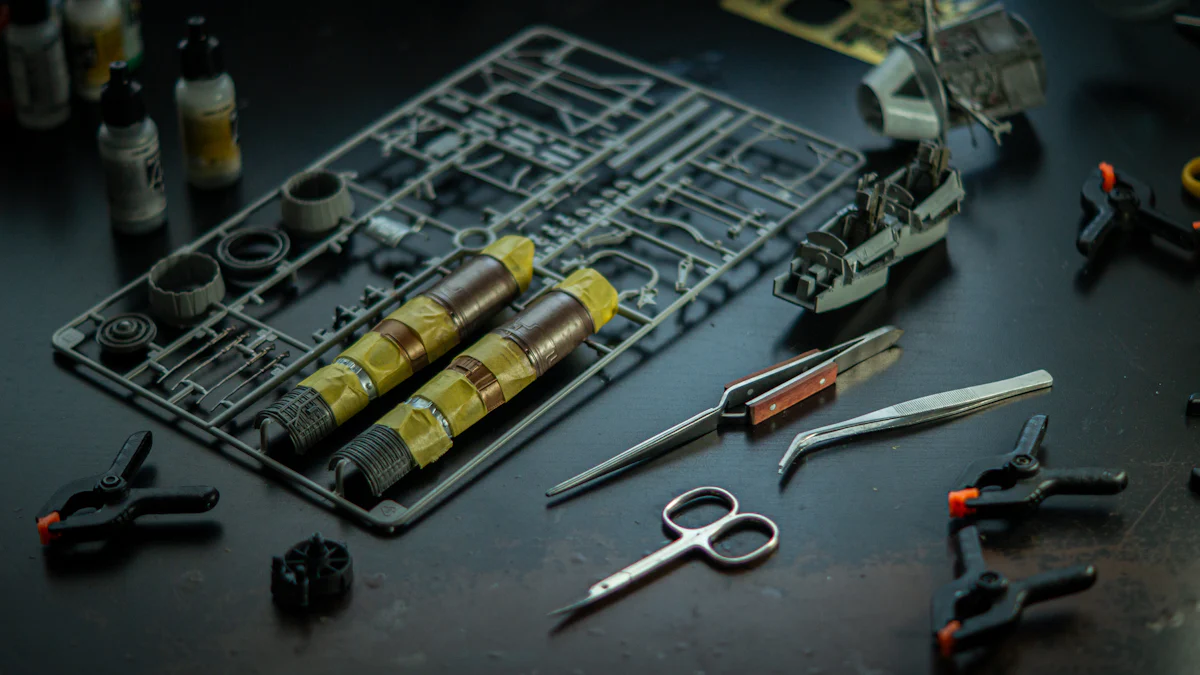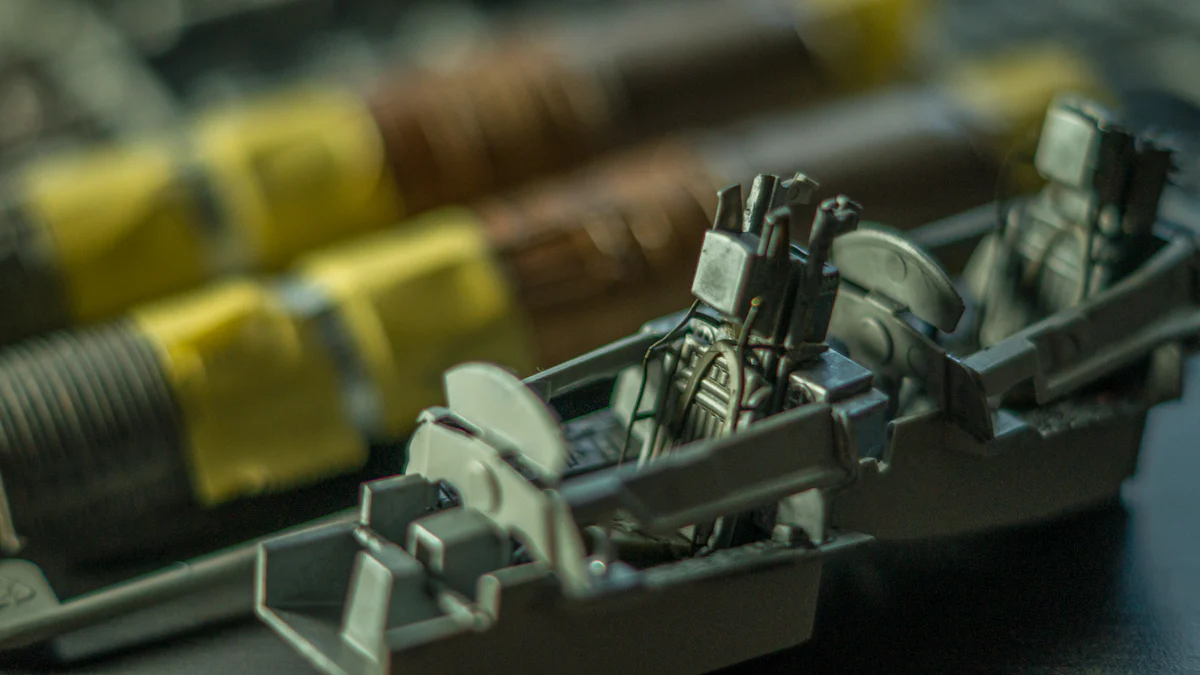
Metal injection molding (MIM) has revolutionized manufacturing by enabling the production of intricate metal components with exceptional precision. A key consideration in this process is understanding “What Are the Best Alloys for Metal Injection Molding?” Selecting the right alloys is crucial to meet specific performance metrics. For instance, titanium alloys offer unmatched corrosion resistance and biocompatibility, making them ideal for medical devices. Meanwhile, the global MIM market, valued at $5.07 billion in 2023, is projected to grow at a CAGR of 11.6%, driven by increasing demand in aerospace and medical industries. This growth underscores the importance of choosing alloys that balance strength, durability, and cost-effectiveness.
Key Takeaways
- Picking the right metal mix is important for metal molding. Think about strength, rust resistance, and price to get the best results.
- Stainless steel is strong and affordable. It works well in medical and car industries because it lasts long and doesn’t rust easily.
- Titanium mixes are great for tough jobs, especially in medical and space fields. They are light but very strong for their weight.
Stainless Steels

Properties of Stainless Steels for MIM
When I consider stainless steels for metal injection molding, their mechanical properties stand out. These alloys combine strength, durability, and corrosion resistance, making them ideal for precision manufacturing. To illustrate, here’s a breakdown of their key properties:
| Property | Value |
|---|---|
| Tensile Strength | 500 to 2000 MPa |
| Flexural Strength | 400 to 550 MPa |
| Impact Strength | Approximately 60 ft-lb/in |
| Molding Temperature | 1370-1425°C |
| Max Temperature | Up to 870°C |
| Chemical Resistance | Rated around 8/10 |
These properties allow stainless steels to withstand high temperatures and harsh environments, ensuring reliability in demanding applications.
Advantages of Using Stainless Steels
I often recommend stainless steels for MIM because of their versatility. They offer excellent corrosion resistance, which is critical for components exposed to moisture or chemicals. Their high tensile strength ensures durability, even under mechanical stress. Additionally, stainless steels are cost-effective compared to other high-performance alloys, making them a practical choice for industries like automotive and consumer goods. Their machinability also simplifies post-processing, reducing production time and costs.
Common Applications of Stainless Steels in MIM
Stainless steels dominate many industries due to their adaptability. For example, in the medical field, they are used to create surgical instruments and implants. In the automotive sector, manufacturers rely on stainless steel components for fuel injectors and turbocharger parts. Common grades like AISI 316L and 17-4PH are particularly popular. Here’s a quick comparison of some widely used grades:
| Grade | Approx. Composition | Features |
|---|---|---|
| AISI/SAE/MPIF420 | Fe-0.2%C 13% Cr (Mn<1%, Si<1%) | Martensitic grade/hardenable, ferromagnetic |
| AISI/SAE/MPIF430 | Fe-16% Cr (<0.08%C, <1% Mn) | Ferritic grade/ferromagnetic |
| AISI/SAE/MPIF316L | Fe-17% Cr 12% Ni-2% Mo (C<0.03%, Mn<1%, Si<1%) | Austenitic grade/nonmagnetic |
| SAEJ467/MPIF17-4PH | Fe-16% Cr 4% Ni-4% Cu-0.3% Nb (C<0.07%, Mn<1%, Si<1%) | PH grade/ferromagnetic hardenable |
These grades cater to diverse needs, from high corrosion resistance to magnetic properties, ensuring stainless steels remain a top choice when asking, “What Are the Best Alloys for Metal Injection Molding?”
Titanium Alloys
Why Titanium Alloys Are Ideal for MIM
I often recommend titanium alloys for metal injection molding due to their exceptional properties. These alloys are biocompatible, making them perfect for medical implants. Their high corrosion resistance ensures longevity, even in harsh environments like the human body. Titanium alloys also boast an outstanding strength-to-weight ratio, particularly in grades like Ti-6Al-4V, which surpasses that of stainless steel. The MIM process enhances these advantages by enabling the production of small, intricate parts with tight tolerances. This combination of properties makes titanium alloys a top choice for high-performance applications.
Key Benefits of Titanium Alloys
Titanium alloys offer several benefits that make them stand out in MIM.
- Their lightweight nature reduces the overall weight of components without compromising strength.
- They provide excellent durability, even under mechanical stress.
- The alloys resist corrosion effectively, ensuring long-term reliability.
- The MIM process allows for cost-efficient manufacturing of complex geometries.
Despite challenges like high reactivity with oxygen and a high melting point, advancements in powder selection, debinding, and sintering processes have addressed these issues. Post-processing techniques, such as hot isostatic pressing, further enhance the mechanical properties of titanium components.
Industries That Use Titanium Alloys in MIM
Titanium alloys find applications across various industries. In the medical field, they are used for orthopedic implants, dental devices, and surgical tools due to their biocompatibility. Aerospace manufacturers rely on titanium components for lightweight yet strong parts in aircraft and spacecraft. The automotive industry uses these alloys for high-performance engine components. Even consumer electronics benefit from titanium’s strength and aesthetic appeal in premium devices. These diverse applications highlight why titanium alloys are among the best options when considering “What Are the Best Alloys for Metal Injection Molding?”
Tungsten and High-Density Alloys

Characteristics of Tungsten Alloys
When I work with tungsten alloys in metal injection molding (MIM), their unique characteristics always stand out. These alloys are known for their exceptional density and strength, making them ideal for high-performance applications. Here’s a quick overview of their key properties:
| Characteristic | Description |
|---|---|
| High Density and Strength | Tungsten parts produced through MIM have a density of approximately 18.5 g/cm³, providing exceptional performance in demanding applications. |
| Material Utilization | The MIM process minimizes material waste by creating near-net-shape components, enhancing sustainability. |
| Precision and Complexity | MIM allows for the production of intricate shapes with tight tolerances, meeting the needs of industries like electronics and aerospace. |
These characteristics make tungsten alloys a reliable choice for applications requiring durability and precision.
Benefits of High-Density Alloys in MIM
I often recommend high-density alloys like tungsten for MIM because of their unmatched performance. Their high density ensures excellent resistance to wear and deformation, even under extreme conditions. The MIM process enhances these benefits by enabling the creation of complex geometries with minimal material waste. This not only reduces costs but also supports sustainability efforts. Additionally, tungsten alloys exhibit remarkable thermal and electrical conductivity, making them suitable for applications in electronics and aerospace. These benefits highlight why tungsten alloys are indispensable in industries requiring high-performance materials.
Typical Applications of Tungsten Alloys
Tungsten alloys play a critical role in various industries. I’ve seen them used in:
- Tungsten carbide nozzles, valued for their wear and corrosion resistance in petrochemical, mining, and food processing industries.
- Tungsten ejector pins, which ensure precision and efficiency in molding applications.
These applications demonstrate the versatility of tungsten alloys and their ability to meet the demands of modern manufacturing. When considering “What Are the Best Alloys for Metal Injection Molding?”, tungsten alloys consistently rank among the top choices due to their unique properties and wide-ranging applications.
Nickel-Based Alloys
Properties of Nickel-Based Alloys for MIM
Nickel-based alloys stand out in MIM due to their exceptional properties. These materials exhibit superior heat resistance, remarkable strength, and the ability to endure corrosive environments. I’ve found that these characteristics make them indispensable for modern engineering and manufacturing. Nickel-based superalloys, such as Inconel and Hastelloy, are particularly noteworthy. They offer outstanding mechanical properties and thermal stability at high temperatures. For example, Inconel 625 provides excellent high-temperature strength, while Hastelloy C-276 excels in resisting corrosion. These properties make nickel-based alloys ideal for demanding applications in aerospace and energy industries, where components must perform reliably under extreme conditions.
Advantages of Nickel-Based Alloys
I often recommend nickel-based alloys for MIM because of their unique advantages. Their ability to maintain mechanical integrity at elevated temperatures ensures durability in high-stress environments. These alloys also resist oxidation and corrosion, which extends the lifespan of components exposed to harsh chemicals or extreme heat. The MIM process enhances these benefits by enabling the production of intricate parts with tight tolerances. This precision reduces the need for extensive post-processing, saving both time and costs. Additionally, the versatility of nickel-based alloys allows manufacturers to tailor their properties to specific applications, making them a flexible choice for various industries.
Applications of Nickel-Based Alloys in MIM
Nickel-based alloys play a critical role in several industries. I’ve seen them widely used in:
- Aerospace: Components like jet engine parts rely on Inconel 625 for its high-temperature strength.
- Energy: Gas turbines often use Hastelloy C-276 due to its corrosion resistance and mechanical reliability.
- Electronics: These alloys provide thermal stability and precision for high-performance devices.
Their exceptional mechanical properties, corrosion resistance, and thermal stability make them indispensable in these fields. When considering “What Are the Best Alloys for Metal Injection Molding?”, nickel-based alloys consistently rank among the top choices for high-performance applications.
Factors to Consider When Selecting an Alloy
Mechanical Properties and Strength
When selecting an alloy for metal injection molding, I always prioritize mechanical properties. Strength, hardness, and ductility determine how well a component performs under stress. For example, stainless steels like 17-4PH offer excellent tensile strength and can be hardened for added durability. Titanium alloys, on the other hand, provide an exceptional strength-to-weight ratio, making them ideal for lightweight applications. I also consider the specific requirements of the part. For instance, aerospace components often demand materials that can withstand high loads without deformation. By matching the alloy’s mechanical properties to the application, I ensure optimal performance and reliability.
Corrosion and Thermal Resistance
Corrosion and thermal resistance play a critical role in alloy selection. I’ve found that different alloys excel in various environments:
- Austenitic steels resist corrosion well due to their high chromium and nickel content.
- Ferritic steels offer decent corrosion resistance but fall short of austenitic grades.
- Duplex stainless steels combine the strengths of austenitic and ferritic grades, providing superior corrosion resistance.
- Nickel-based alloys like Inconel excel in high-temperature environments, maintaining stability under extreme heat.
These properties ensure the longevity of components exposed to harsh conditions, such as medical implants or jet engine parts.
Cost and Manufacturing Feasibility
Cost and manufacturing feasibility often dictate alloy choice. I evaluate factors like tooling, material costs, and production volume. For example, tooling represents a significant upfront investment, especially for complex parts. Material costs account for 10-15% of the total part cost, with high-performance alloys like titanium and nickel being more expensive. Here’s a breakdown:
| MIM Cost Component | Details |
|---|---|
| Tooling | High initial costs depending on part complexity |
| Materials | Higher costs for premium alloys like titanium |
| Volume | Cost-effective for medium to high production volumes |
By balancing these factors, I ensure the alloy aligns with both budget and production goals.
Metal injection molding offers versatility by utilizing specific alloys tailored to applications. Stainless steels like 316L and 17-4 PH provide corrosion resistance and strength, ideal for surgical tools and automotive parts. Titanium alloys, such as Ti-6Al-4V, excel in aerospace and medical implants due to their strength-to-weight ratio. Tungsten alloys, known for high density, serve in radiation shielding. Nickel alloys like Inconel 718 withstand high temperatures in aerospace engines. When choosing an alloy, consider mechanical properties, corrosion resistance, and cost. Consulting MIM experts ensures optimal material selection for your needs. This approach answers the question, “What Are the Best Alloys for Metal Injection Molding?”
FAQ
What is the most cost-effective alloy for MIM?
Stainless steels often provide the best balance of cost and performance, making them a popular choice for many applications.
How do I choose the right alloy for my application?
Consider mechanical properties, corrosion resistance, and cost. Consulting with MIM experts can help tailor the selection to your specific needs.
Can MIM produce complex shapes with these alloys?
Yes, MIM excels at creating intricate parts with tight tolerances, making it ideal for complex geometries in various alloys.
